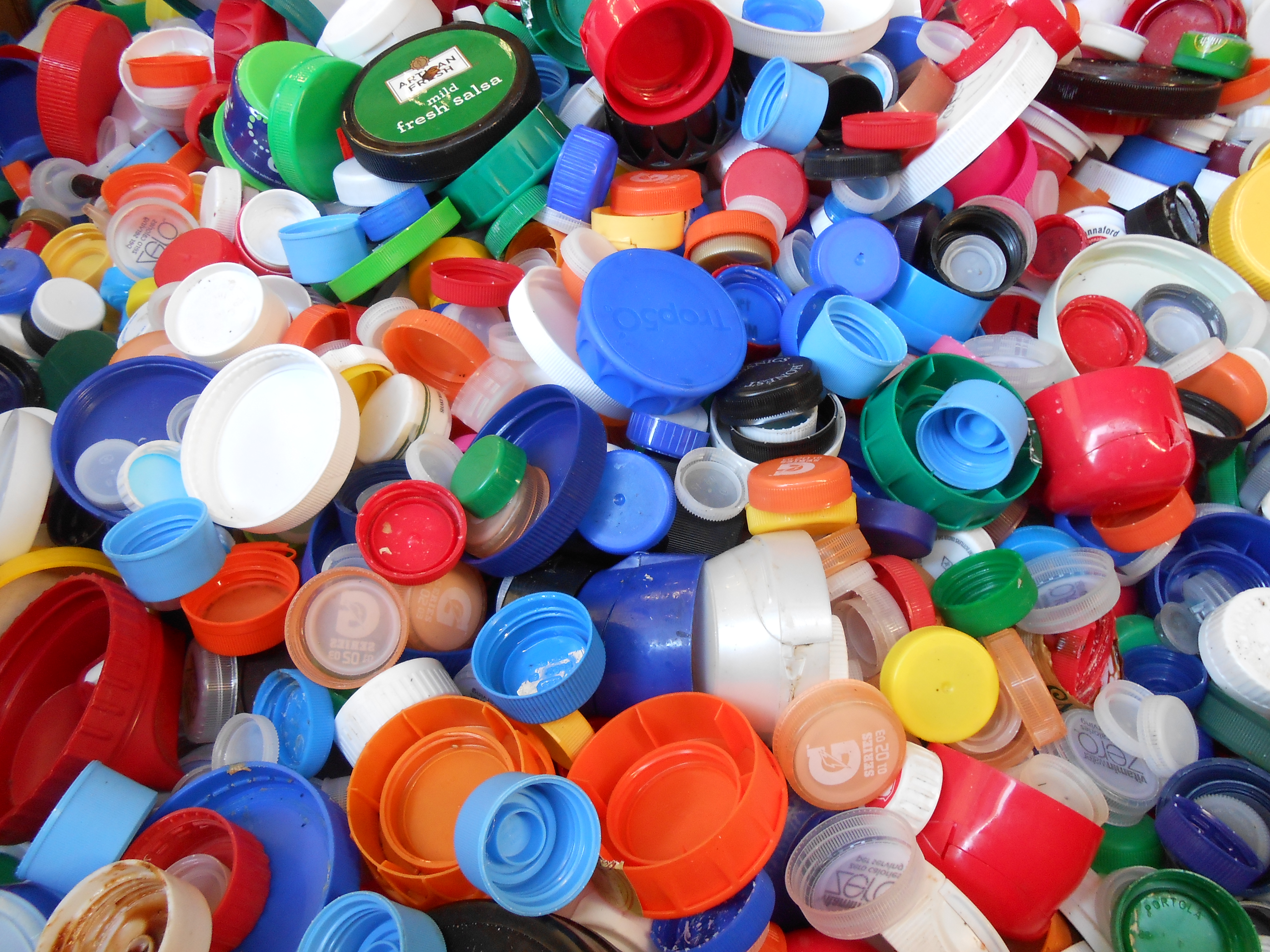Commodity Spotlight – Confusion on Caps
Caps on bottles have been a point of confusion in the recycling industry. Should caps be left on containers, thrown in the trash, or separated out? Are caps considered contamination? NRRA’s member service team would like to clear up some of these questions for members, and help you determine what the best protocol is for your facility.
Caps are typically made of polypropylene, or number five plastic. Bottles and jugs are most often made of number one PET (i.e., plastic water bottles, salad dressing containers, mouthwash containers, etc.) or number 2 HDPE (i.e., milk jugs, bleach containers, etc.) plastic, being a different plastic than that of a cap.
Pros and Cons
In the past, caps had been known to jam baling equipment, cause lower bale weight, and present a safety hazard. This was mainly due to air captured in bottles with a tight seal. Leaving caps on had led to lower bale density and pressurized bottles, causing caps to “shoot” off. These issues are less prevalent in current times due to advancement in baling technology.
In certain instances, caps can be a source of contamination depending on the processing facility and the equipment they use. This can be attributed to the mix of materials making the separation process difficult and time consuming. Ultimately, these complexities are rooted in the fact that different plastics get repurposed based on their varying chemical structures.
Despite the challenges that caps present, some vendors have the ability to recover them and market caps for recycling! This is typically done through a separation process called “sink or float.” The separation process is based on density, where PET plastic will sink, and HDPE and polypropylene (caps) will float.
Video depicting “sink or float” separation process.
From Our Vendors
TABB: Per specs, caps are okay to include on HDPE natural, HDPE mixed color, and PET bales. However, these caps will not get recycled. According to TABB, “They are captured but it’s considered a loss for us because we do not process that material.”
Unifi: Per Unifi, “Yes, caps are acceptable” and these caps do get recycled! Unifi has secured an end market for Polypropylene caps. Further, “From our weekly production, we manufacture about 60,000 lbs. of caps in super sacks” according to Unifi.
EFS Plastics: It is requested that caps stay on bottles. In terms of separation, “Currently we do not have an easy way to accept loose caps in gaylords” per EFS. For now, they are requesting that any loose caps are incorporated into #3 - #7 plastic bales. EFS suggests, “Caps be bagged in plastic bags and then baled with #3 - #7” if separation is necessary.
End Uses
Once polypropylene is recovered, it can be recycled into numerous products. Polypropylene caps can be turned into mixing bowls, spatulas, cutting boards, snow shovels, watering cans, flowerpots, automotive battery cases, oil funnels, ice scrapers, storage bins, paint cans and more. Recovered polypropylene can also be melted down into pellets which can be sold and turned into new plastic products, according to Unifi.




Recycled PP flowerpot, oil funnel, snow shovel, and storage bin.
 Recycled PP pellets.
Recycled PP pellets.
For further clarity on how caps should play a role in your community’s recycling program, or to get a plastics recycling program started, reach out to NRRA’s Member Services Team for more information.
